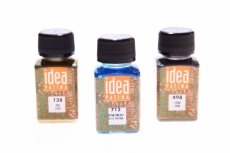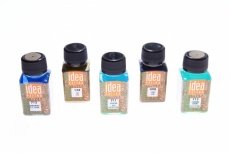Idea Patina 60ml
As far back as classical antiquity poets and men of letters celebrated the colour of the noble patina which copper and bronze acquire over time. Ancient writers report that sculptures and metal objects were treated with a procedure referred to as "ganonis" which was intended to dull the overly bright sheen of newly cast metal. The patina on metals has been appreciated ever since those days. In the Middle Ages and the Renaissance techniques were devised to imitate its effects, giving rise to controversy and learned dissertation on the restoration and conservation of ancient art in the Romantic age. With the affirmation of the Neoclassical style, patina became an art; even today, creating a patina and giving metal or metal-coated objects an antique appearance is common practice in the decorative arts, continuing the tradition of surface imitation which was until recently possible only with paints and colours.
Idea Patina is a revolutionary range of products for amateur and professional use which reproduce - or rather, produce - a perfect imitation of the patina of age or alteration and oxidation of metal surfaces through natural chemical processes.
A perfect patina is generated by the chemical reaction between special salts and ultra-fine powdered bronze, copper and other metals. The authentic patina is achieved by actual transformation of the metal, not by painting. With the exception of bitumen, which is soluble in white spirit, all Patina products are water-soluble, permitting adjustment of the desired effect using the most common solvent offered by nature.
Available colors
Recommended products
-
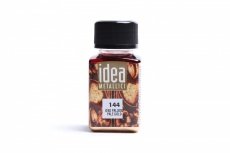
-
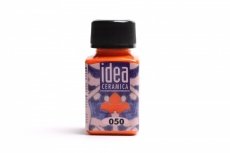 € 7.70
€ 7.70Idea Ceramica 60ml
-
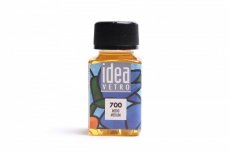 € 7.70
€ 7.70Idea Vetro Glass 60ml
-


